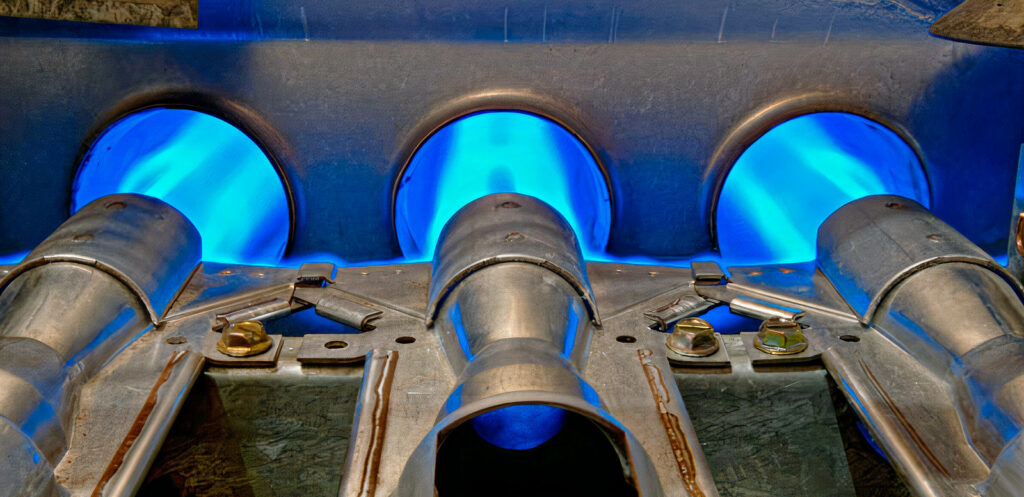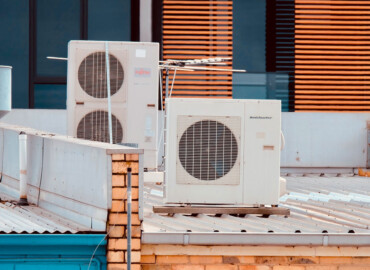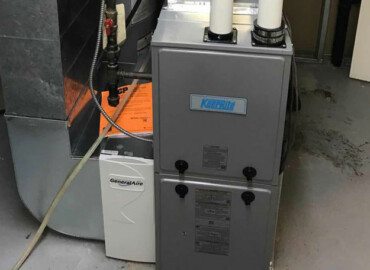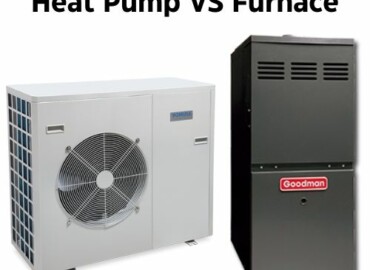Furnace Stopped Working: What to do?
When the furnace stops working, it can be a cause for concern, especially during cold weather. However, there are several steps you can take to troubleshoot and potentially resolve the issue before seeking professional help. By following a systematic approach, starting with basic checks and progressing to more advanced troubleshooting, you can increase the chances of identifying and rectifying the problem. This article provides an overview of the steps to take when your furnace stops working, offering practical advice to help you restore heat and comfort to your home.
Signs that your furnace has stopped working
Now that we know why a furnace may stop working, it’s important to be able to recognize the signs that your furnace has stopped working. Some common signs include:
- No heat: If you turn on your furnace and you’re not getting any heat, it’s a clear sign that something is wrong. It could be a problem with the thermostat, the pilot light, or the furnace itself.
- Strange noises: If you hear strange noises coming from your furnace, such as banging or rattling, it could be a sign of a mechanical issue.
- Increased energy bills: If you notice a sudden increase in your energy bills, it could be a sign that your furnace is not running efficiently and may have stopped working.
What to do if your furnace has stopped working
If you’ve noticed any of the signs mentioned above, it’s time to take action. Here are the steps you should take if your furnace has stopped working:
Check the thermostat
If the furnace has stopped working, checking the thermostat is the first thing to consider. Here’s what you can do-
- Check the thermostat settings – Ensure that the thermostat is set to “Heat” mode and the temperature is set higher than the current room temperature. Sometimes, the thermostat settings can be accidentally changed, so double-check to make sure it’s properly configured.
- Replace the batteries – If your thermostat is battery-powered, low batteries can cause it to stop working or lose connection with the furnace. Replace the batteries with fresh ones and see if that resolves the issue.
- Clean the thermostat – Dust or debris accumulation can interfere with the thermostat’s functioning. Gently clean the thermostat using a soft brush or cloth to remove any dirt or obstructions. This can help ensure accurate temperature readings and proper operation.
- Check the wiring – Inspect the thermostat’s wiring to ensure there are no loose connections or damaged wires. If you’re comfortable doing so, you can carefully tighten any loose connections or consider calling a professional if there’s visible damage.
- Reset the thermostat – Some thermostats have a reset button or a reset option in the settings. Refer to the thermostat’s manual to learn how to reset it. Resetting the thermostat can sometimes resolve minor glitches or issues.
- Test with another thermostat – If possible, test the furnace with another thermostat. This can help determine if the problem lies with the thermostat itself or with the furnace. If the furnace operates correctly with a different thermostat, then the original thermostat may need to be repaired or replaced.
Verify the power supply
Verifying the power supply is an essential step when troubleshooting a furnace that has stopped working. Here’s what you can do-
- Check the electrical panel – Locate the circuit breaker or fuse box that controls the furnace. Open the panel and inspect the breaker or fuse corresponding to the furnace. Check if the breaker has tripped or if the fuse has blown. If you find a tripped breaker, reset it by flipping it to the “off” position and then back to the “on” position. If you find a blown fuse, replace it with a new one of the same rating.
- Ensure the furnace switch is on – Locate the furnace switch, usually located on or near the furnace itself. It looks similar to a light switch. Make sure the switch is in the “on” position. If it was accidentally turned off, flipping it back to the “on” position may restore power to the furnace.
- Verify other switches – Some furnaces have additional switches that control power to different components or systems. Check if there are any other switches related to the furnace, such as emergency shut-off switches or auxiliary switches. Ensure they are in the correct position for the furnace to receive power.
- Check for loose connections – Inspect the wiring and connections around the furnace to make sure everything is securely connected. Loose or disconnected wires can prevent the furnace from receiving power. If you notice any loose connections, carefully tighten them or contact a professional if you’re unsure.
- Test other electrical appliances – Verify if other electrical appliances in your home are working. This can help determine if there’s a broader electrical issue in your home rather than just the furnace. If multiple appliances do not receive power, it may indicate a problem with the electrical supply or a larger outage. In such cases, contact your electricity provider.
Inspecting the air filter
Inspecting the air filter is an important step when troubleshooting a furnace that has stopped working. Here’s what you can do-
- Locate the air filter – The air filter is typically located near the air intake of the furnace. It can be inside the furnace cabinet, in a wall or ceiling return air grille, or in a separate filter housing.
- Remove the air filter – Carefully remove the air filter from its housing or slot. Take note of its size and type, as you may need this information if a replacement is required.
- Inspect the air filter – Examine the air filter for dirt, dust, or debris accumulation. A dirty or clogged filter can restrict airflow and cause the furnace to malfunction or shut down for safety reasons.
- Clean or replace the air filter – If the filter is dirty but still in good condition, you can try cleaning it. Use a vacuum cleaner or rinse it gently with water, depending on the type of filter. Allow it to dry completely before reinstalling. However, it’s generally recommended to replace disposable filters rather than cleaning them.
- Reinstall the air filter – Place the cleaned or new filter back into its housing or slot, ensuring it is properly aligned and secure. Follow the manufacturer’s instructions for the correct orientation of the filter.
- Test the furnace – After cleaning or replacing the air filter, turn on the furnace and observe if it starts functioning properly. If the issue was due to a dirty filter causing airflow problems, this step may resolve the problem.
- Monitor the filter regularly – It’s important to maintain the air filter regularly to prevent future furnace issues. Check the filter at least once a month and clean or replace it as needed, especially during periods of heavy use.
Checking the gas supply
Checking the gas supply can really help to check a furnace that has stopped working. Here’s what you can do-
- Check other gas appliances – Verify if other gas appliances in your home, such as stoves or water heaters, are working. If they are also not functioning, it may indicate a problem with the gas supply. In such cases, contact your gas provider to inquire about any gas outages or issues in your area.
- Check the gas valve – Locate the gas valve that supplies gas to the furnace. It is usually located near the furnace or on the main gas line. Ensure that the valve is fully open. The handle of the valve should be parallel to the gas pipe if it is in the open position.
- Smell for gas – If you suspect a gas supply issue, carefully smell the area around the furnace and gas line. Natural gas has a distinct odor, often described as a rotten egg smell. If you detect a strong gas odor, it may indicate a gas leak. In such cases, leave the premises immediately, avoid using any electrical devices or open flames, and contact your gas provider from a safe location outside.
- Check the gas meter – If you are comfortable doing so and it is safe, check the gas meter to ensure it is functioning properly. The gas meter should display a reading or dial movement, indicating that gas is flowing. If you notice no activity on the gas meter, it may suggest an issue with the gas supply.
- Contact your gas provider – If you have performed the necessary checks and suspect a gas supply issue, it’s advisable to contact your gas provider. They can provide guidance and assistance in determining if there are any problems with the gas supply to your home.
It’s important to exercise caution when dealing with gas-related issues. If you suspect a gas leak or are unsure about any of the steps involved, prioritize your safety and contact a professional HVAC technician or your gas provider for assistance.
Examining the pilot light
Examining the pilot light is a relevant step if you have an older furnace that relies on a pilot light for ignition. Here’s what you can do-
- Locate the pilot light – Look for the access panel on the furnace. Inside, you should find the pilot light assembly. Consult your furnace’s manual if you’re having trouble locating it.
- Observe the pilot light – Carefully open the access panel and visually inspect the pilot light. A pilot light should appear as a small, steady flame. If you don’t see any flame, the pilot light may have gone out.
- Relight the pilot light – Follow the manufacturer’s instructions, usually provided on a label near the pilot light, to relight it. The process typically involves turning the gas valve to the “pilot” position, pressing and holding a button or control knob, and using a long lighter or match to ignite the pilot light while continuing to hold down the button or control knob.
- Confirm the pilot light stays lit – Once you’ve ignited the pilot light, continue to hold the button or control knob for about 30 seconds. This allows the thermocouple (a safety device) to heat up and confirm that the pilot light is lit. If the pilot light stays lit after releasing the button or control knob, it indicates a successful ignition.
- Check for proper flame color – The pilot light’s flame should be a steady blue color with a small yellow tip. If the flame appears mostly yellow or flickering, it may be a sign of an issue. In such cases, it’s recommended to contact a professional technician for further inspection.
- Repeat the process if necessary – If the pilot light doesn’t stay lit after multiple attempts or goes out immediately after releasing the button or control knob, there may be a problem with the pilot light assembly, gas supply, or thermocouple. It’s best to contact a professional HVAC technician for assistance in such cases.
Remember, newer furnaces typically use electronic ignition systems instead of a pilot light. If you’re unsure about your furnace’s ignition system or uncomfortable working with the pilot light, it’s always recommended to seek the help of a qualified professional.
Inspect the air vents and ducts
Inspecting the air vents and ducts is another important step when troubleshooting a furnace that has stopped working. Here’s what you can do:
- Check the air vents – Walk around your home and check all the air vents to ensure they are open and unobstructed. Ensure furniture, rugs, curtains, or other objects are not blocking the vents. Obstructions can restrict airflow and cause the furnace to malfunction.
- Clean the vents – Use a vacuum cleaner or a soft brush to remove dust, debris, or any build-up on the vent covers. This can help improve the airflow and ensure the proper functioning of the furnace.
- Examine the ductwork – If possible, visually inspect the ductwork for any visible signs of damage, disconnected sections, or leaks. Look for loose connections, gaps, or holes in the ducts. Damaged or leaking ductwork can lead to loss of heat and reduced airflow.
- Seal any leaks – If you find any leaks or gaps in the ductwork, you can use duct tape or mastic sealant to seal them. Ensure that the ducts are properly sealed to prevent air leakage and improve efficiency.
- Consider professional duct cleaning – If you notice excessive dust build-up or suspect that the ducts are dirty, you may consider hiring a professional duct cleaning service. They can clean the ductwork and remove any accumulated dust, debris, or contaminants that could be affecting the furnace’s performance.
- Ensure proper insulation – Check if the ductwork in unconditioned spaces, such as attics, basements, or crawl spaces, is adequately insulated. Proper insulation helps maintain the temperature of the air as it travels through the ducts, preventing heat loss or gain.
Reset the furnace
Resetting the furnace can sometimes resolve minor issues or glitches that may have caused it to stop working. Here’s how you can reset the furnace –
- Locate the furnace switch – Find the main power switch for the furnace. It is typically located on or near the furnace itself. It may look like a standard light switch or a toggle switch.
- Turn off the furnace – Flip the furnace switch to the “off” position. Wait for a few minutes to ensure the furnace completely powers down.
- Turn on the furnace – After a few minutes have passed, flip the furnace switch back to the “on” position.
- Reset the circuit breaker – If the furnace has its dedicated circuit breaker in the electrical panel, locate the breaker and switch it off. Wait for a few minutes, then switch it back on. This can help ensure a full reset of the electrical system.
- Wait for the furnace to restart – Give the furnace a few moments to restart. You should hear it begin the startup sequence, which may involve the blower fan starting and the ignition system attempting to light the burners.
- Observe the furnace operation – Monitor the furnace to see if it starts functioning correctly. Listen for the sound of the burners igniting and the warm air circulating through the vents. Check if the thermostat responds and adjusts the temperature accordingly.
If the furnace still doesn’t start or encounters the same issues after the reset, it’s advisable to contact a professional HVAC technician. They have the expertise to diagnose and address more complex problems with the furnace and can ensure proper repairs are made.
FAQ
Why would a furnace suddenly stop working?
There could be several reasons for a furnace to suddenly stop working, including issues with the thermostat, power supply, pilot light, gas supply, or a malfunctioning component such as the blower motor or ignition system.
What to do when a furnace stops working?
If your furnace stops working, there are a few troubleshooting steps you can take. Check the thermostat settings, ensure the power supply is functioning, and check if the pilot light is lit. If these basic checks don't resolve the issue, it's advisable to contact a professional HVAC technician for a thorough diagnosis and repair.
How do I reset my furnace?
To reset a furnace, locate the furnace's reset switch or circuit breaker and turn it off for a couple of minutes. Then, switch it back on. Refer to your furnace's manual or consult an HVAC professional for specific instructions on how to reset your particular furnace model.
Is there a reset button on my furnace?
Many modern furnaces have a reset switch or button. It is typically located near the blower motor or on the control panel. However, not all furnaces have a reset button. Consult your furnace's manual or contact an HVAC professional to determine if your furnace model has a reset button.
Can a thermostat cause a furnace to stop working?
Yes, a malfunctioning or improperly calibrated thermostat can cause a furnace to stop working. If the thermostat isn't sending the correct signals to the furnace, it may not turn on or cycle properly. Checking the thermostat settings and ensuring it is functioning correctly is an important troubleshooting step.
What is a common failure for a furnace?
A common failure for a furnace is a faulty igniter or pilot light. If the igniter fails to light the burner or the pilot light goes out, the furnace won't be able to produce heat. Other common failures include issues with the blower motor, gas valve, or control board.
How long is the life expectancy of a furnace thermostat?
The life expectancy of a furnace thermostat can vary depending on the quality, usage, and maintenance. On average, a thermostat can last around 10 to 15 years. However, it's important to monitor its performance and consider replacement if you experience frequent issues or notice reduced functionality.
What are the symptoms of a bad thermostat for a furnace?
Symptoms of a bad thermostat for a furnace can include inaccurate temperature readings, unresponsive controls, failure to start or stop the furnace, or irregular cycling of the heating system. If you suspect a faulty thermostat, it's advisable to have it inspected or replaced by an HVAC professional.
What are the signs of a thermostat not working?
Signs of a thermostat not working properly include temperature inconsistencies, the furnace not turning on or off when it should, frequent cycling of the heating system, or unresponsive controls. If you notice any of these signs, it's recommended to have the thermostat checked or replaced by a professional HVAC technician.




